Archived Comments
Enjoy the past comments below for The cringe factor…
Clyde, I like your work. It is well done and should sell. However, you perhaps should live in a market such as New York rather than Denver. Is the work you do something people in Denver would buy? Go to Gallery open-house events to see what flies off the wall. This may give you a clue. If you want to sell your work you have to be the best artist you can be. When you go fishing, you bait the hook with what the fish are eating, not what you eat. Re-look at your subject matter. One last thought….. Is the economy in the Denver area depressed? That might just be a large part of the problem.
What about the paintings that are technically good, but make you cringe because they are too transparent a window into what you were thinking when you painted them? Some of my old paintings make me wonder that I was ever that unsophisticated and shallow. Or maybe just young. Will I think the same thing in the future about the things I’m painting now? Yechh!
Years ago I had a relationship with a gallery owned and run by a woman who would not accept work from her artists that was, in her mind, not up to that artist’s standards. She knew what she was doing and was always right. There were several times in those younger days of mine that she simply told me not to leave something with her. She required at least two new pieces per month from her artists and we were to remove anything that had been there three months unless she requested that we leave something longer. She sold well for her artists and none of us seemed to have trouble with her judgement. Not many gallery owners have the guts or knowledge to do what she did, but it worked for us.
Artists should always work beyond what they already know. That is the key to being creative. These days an artist needs to have 25 SOLID and strong pieces ready to go before a gallery will even consider taking their work. There needs to be a through-line in a collection showing the artists creative voice. What an artist needs to watch out for is the “onesy-twosy’s” where an artist has a fluke and brings in a stunning new piece where there is a complete 360 degree change. Then they can keep trying to shoot arrows in the sky and bring in this or that and nobody, including the artist, really knows what is going on. Making your work a collection and treating their career like a business is the key to a happy artist and a gallery that can carry their work with confidence. John Ferrie
Then there’s always the thought that “One mans’ (artist’s) trash , is another man’s treasure.” Who can figure a buyer?
I feel as though I let go of my best, most precious pieces. I miss them and am sad they are no longer with me. I should be happy that they were appreciated and purchased. But there is a huge interior of me that wishes for them to come home.
I really, really like Clyde’s artwork and how he captures ‘a moment in time’ in his models’ lives. His choice of colors capture the energy of his subjects, as well. These paintings really hold my interest and make me want to study them, as well as just enjoying them as paintings. Isn’t that why we artists create? Thanks for posting these lovely works! Kennesaw, GA
Perhaps to a viewer some works may not look as good as others but then it is subjective.One person may differ in there perception.I agree that the best critic of ones work is the artist himself.He would have to carefully review what he is doing periodically to analyze if there is any room for improvement.Remove yourself from the work for a certain period to have a fresh look each time.It can only be as good as when the artist is satisfied.Thanks for the challenging letter.
Glad to read this letter, as I am outside reworking an old painting for a show. It’s hard to destroy work but I’m getting better at it. Best to keep only the good ones alive and well. Some borderline pieces hang around too long. Here there are new opportunities to sell unframed unmatted work at quick shows provided by galleries. It’s a big help in clearing out the studio.
But how to rise above the need for income and also above the clamor of artwork that “looks” like yours (my public seems to want me to stay with a certain identifiable style, whether it’s good for my creative growth or not)? Some see this as an enviable rut, but a rut is still a rut.
The difference between destiny and destination depends on the stories we craft. steve@storytelling.co.za
Seems pretty hard to avoid this pitfall if you are constantly improving! I might destroy everything since I am never satisfied or never finish a painting!
I would just like to comment on your statement that “shows, dealer pressure and too many galleries can degrade your quality”. These things don’t degrade the quality of an artist work, as your article continues to imply, however, they are an external influence to an internal system. It seemed significant to point out the difference, if only to myself! Thank you for listening, I love your articles. Future topic to discuss: If you don’t sell anything, are you still an artist? [janemcclain.artist@hotmail.com
I totally identified with thoughts in the Cringe Factor; the thought that seeing good pieces of your work gives you the uncomfortable feeling you may be getting worse; that made me laugh. I have had that feeling as well. And in general to be aware of the quality of your work. I find that this makes me so slow that I have a hard time getting enough work together to approach a gallery in the first place! I fully appreciated your thoughts on how much you have to be looking at your work in all different lights and moods, and thinking ahead. This will help “speed me up”. Thanks and Happy holidays,
You remark on the value of looking at your paintings through fresh eyes. I keep a mirror on the back wall of my studio which allows me to view my work “flopped” as I’m working on it. It’s an old painters trick… I think Leonardo made mention of it. Since we can develop “tunnel vision” if we stare at our work for too long… the reversed image is “new” to the eye and it brings problems with the painting into focus.
The “cringe factor” is just the nature of being an artist because we open ourselves up to others’ viewpoints every time we put our art on display You have another quote about quality in your list, Robert, and I think it really says it all. “Quality is a word that assumes all parties have the same point of view.” (Judy Elliott)
I’d just like to wish everybody a Merry Christmas
I am one of the tens of thousand of the Brotherhood and Sisterhood who reads this thread religiously and does not make a comment. The input ranges from the ignorant to the informed, and that is its brilliance. Bravo. Yes, season’s greetings everybody.
After getting over the hyperbole of what the experts and critics say is good there are two things to be considered in every artists life. One is many artists exhibit too early. That is there is period of learning and experimentation. Many paint for a year or less and seek representation. This is a huge mistake and will set an artist back more years than they can imagine. Every young artist, after a good solid time of study, will begin to do good work and they believe it is their best. And it may be for that time. But, when you look at the great artists of the past and even some in the present, can your work stand up to comparison when put head to head. What I am saying is there is good work and then there is great work. Truly great work only comes with time and experience. How many of us look back at what we thought was good and cringe wishing we could take it back. We all look at previous work and know we know we can do better. Many do. When do you say this is my mature, quality work? Going this road alone is very difficult. Asking the experts can also be misleading. Ultimately only you will be the final judge. But we all need mentors, those who we trust to tell us the truth without bias. These people are out there but hard to find. Being an artist who will last means all other things are subordinate to your art. Take the time to try things and experiment. Dont try to make you masterpiece. The old saying I was told is you will cover miles of canvas before you begin to see results and only then will the real work
Let me tell you how I feel about the cringe factor. Many of the works shown in the clickbacks are obviously produced from a photographic base. This is evident in the very correct postures, perspectives and details. This to me is like writing a poem after reading a very short story, simply putting some of the facts to rhyme. Yes, I know one has to choose the scene and compose, but true art is in writing that poem from within, or painting or sketching the scene as the artists eye perceives it, is it not?
May the Holidays be colorful and bright!!!
The opportunity to clean older works for customers and friends is golden. As a gesture of goodwill it reinforces your attitude of standing by your work. It also gives you a chance to check earlier painting techniques and procedures, possibilities of fading, cracking, granulating, etc.
Thanks to all for the feedback, ideas and the opportunity to view the work of hundreds of artists that I would otherwise never have discovered. Merry Christmas to everyone.
Bad work is bad work. The idea that craft can be overlooked in exchange for concept has set art backwards from where it ought to be. To be in a gallery and see a cringe worthy piece I make several assumptions and none of them are positive in terms of the gallery, its owner or the artist.
I love the girl with the orange hair.

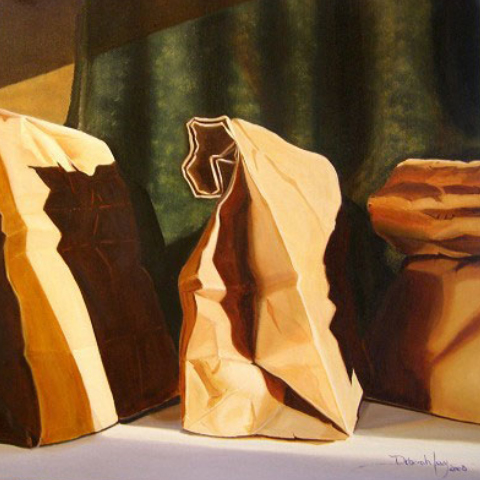
Lightscapes oil painting by Deborah Levy, Highwood, IL, USA |




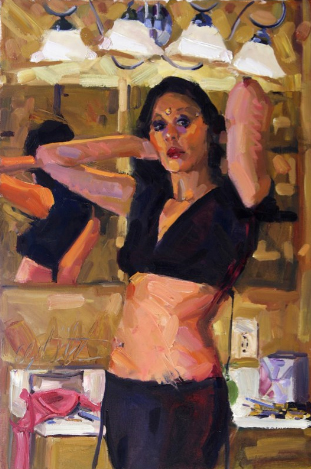
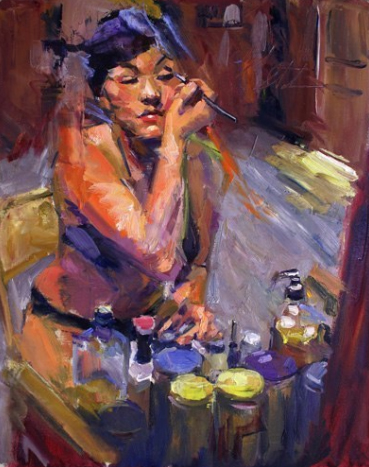

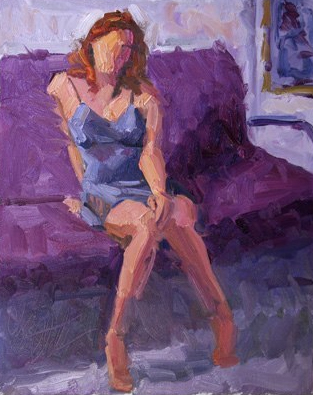
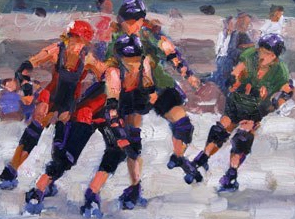
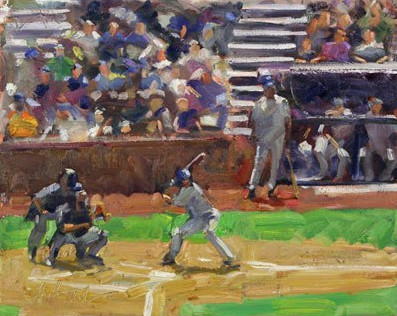

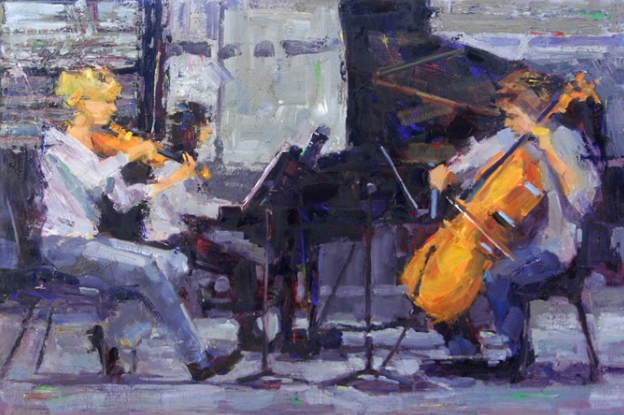








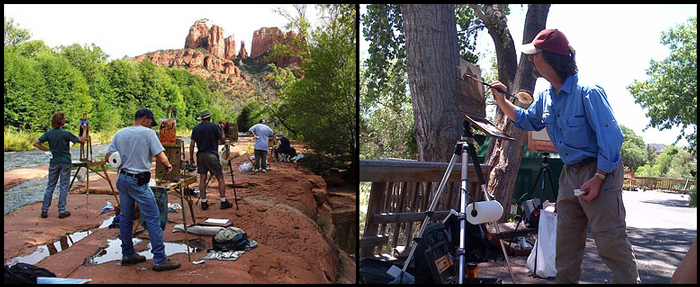



Thanks for sharing this tip – it’s inspiring!